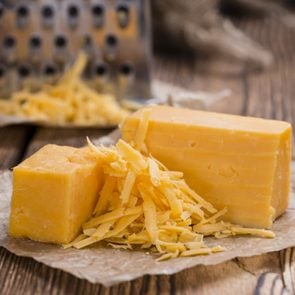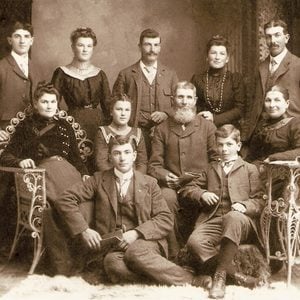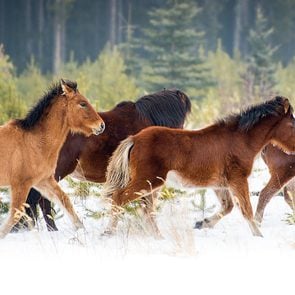Do those red dots on tires mean the tires are on sale? Is there something wrong with tires marked with yellow dots? Do the dots indicate where or when the tires were made?
Nope, nope and nope. Here is what’s really going on with these dots: Because it’s nearly impossible to manufacture a perfectly balanced, perfectly round tire, manufacturers identify any irregularities with these dots of paint. The dots then help service technicians correctly install and balance the tire. Properly balanced tires and wheels are critical to driving comfort and safety, and those paint dots help make that happen.
Note: When a tire (the black rubber part that wears out) is mounted onto a wheel (the round metal part the tire is attached to) it’s referred to as a tire/wheel assembly.
Where Are the Paint Dots Placed?
The yellow dots identify where a tire weighs the least—the lightest point on a tire. The yellow dot should be directly across from the valve stem, which is the wheel’s heaviest point.
The red dots identify where the tire is flattest—the lowest point on a tire. The red dot should be directly across from the highest point of the wheel, which is usually indicated by a coloured dot or a notch on the wheel.
If a tire has a yellow and red dot, the red dot takes precedence when balancing the tire.
Why Are These Tire Dots Important?
The yellow and red dots indicate inconsistencies in a tire’s weight, construction and structure, which can cause them to vibrate when spinning. Vibrating, unbalanced tires can negatively affect ride quality, fuel economy and braking effectiveness, among other things. A vibrating tire/wheel assembly makes controlling your vehicle more difficult, especially at high speeds, and can increase stopping distance.
A hopping tire/wheel loses full contact with the road surface generating less friction when braking. Keep in mind, the section of tire that actually touches the road, called the contact patch or footprint, isn’t much larger than the palm of your hand.
What Does Wheel Balancing Do?
Wheel balancing spins a tire/wheel assembly to identify the location(s) where weights need to be placed to eliminate vibrations and help tires roll smoothly. Out-of-balance tires may develop dangerous bald spots, which negatively affect tread wear, and shorten tire life. Out-of-balance tires can also cause premature suspension component failures.
The two most common types of wheel balancing are dynamic and match-balancing. During dynamic balancing, wheel weights are added to counteract tire imbalance that results in tire hop. Match-balancing matches the tire’s low point to its wheel’s high point, providing a smooth ride.
Tires are expensive. When having your new tires mounted and balanced, ask your tire installation professional if their wheel balancing equipment can match-balance tires. This is especially important if your wheels lack any markings. (Here are more tips to extend the life of your tires.)
What Causes a Tire To Get Out of Balance?
Tires become unbalanced when the weight around the tires and wheels is no longer evenly distributed. These are some possible causes:
- Tire/wheel assembly becomes lighter as tires wear.
- Tires are over or under-inflated.
- Improper alignment results in abnormal tire wear.
- A wheel weight has fallen off.
- An improper wheel or tire repair.
- Leaky valve stem replacement.
- Cold mornings cause “flat-spots.”
- The car has been sitting in one place too long.
- The wheel is damaged from hitting a pothole or bouncing into a curb.
To extend tire life and even out wear, check tire pressure and rotate tire/wheels every 8,000 to 13,000 kilometres. However, If you notice vibration while driving, you’ll need to have the pros balance the tires.
Next, find out what the numbers on your tires mean.

Why Mount Pleasant Cemetery is one of Toronto’s most overlooked gems
Just beyond my backyard fence lies Mount Pleasant Cemetery. From my balcony, I look over gravestones, some of which date back to the mid-1800s. Ever since I was a child, I’ve been fascinated by cemeteries, especially very old tombstones. The dates on them, combined with my active imagination, take me back in time to a different way of life. So when I moved into my home in Toronto, I looked forward to exploring this cemetery and knew I’d learn more of the city’s history from its gravestones and mausoleums. What I didn’t know was that my visits would also teach me about trees.
My first walks through the cemetery were focused on the gravestones, both for their design and the glimpse into Toronto’s past. Among the notable names I recognized were William Lyon Mackenzie King, former prime minister of Canada; Timothy Eaton (above), founder of Eaton’s department stores, and Sir Frederick Banting and Charles Best, co-discoverers of insulin.

After several visits, I began to look at the trees as well and noticed there were many I wasn’t familiar with. I began looking more closely at the bark, leaves and flowers, and found myself stopping to read the small green signs that identified the species. At home I would look them up on the Internet and learned that leaves can be broad, flattened and scale-like; bark wasn’t just bark, it can be fissured, furrowed, scaly or smooth and some trees, such as the London plane, shed their bark. I was hooked.
In 1873, the Toronto General Burying Grounds trust purchased 200 acres for a new city cemetery and assigned the layout to landscape architect Henry Englehardt, who envisioned a park-like setting. The cemetery was so different from other burial grounds and so beautiful that an early city souvenir guidebook told tourists that, “No visit to Toronto will be complete without a visit to Mount Pleasant Cemetery.” If I were writing a guidebook now, I’d say the same thing. In fact, in the modern day version of a guidebook—the website TripAdvisor—tourists have given Mount Pleasant a five-star rating.
Not only did Henry Englehardt want the cemetery to be a park, he wanted it to be an arboretum. He would be pleased to know that Mount Pleasant is now considered to have one of the finest tree collections in North America. There are hundreds of trees, both native and introduced, of every shape and size.

In spring and summer, when I look at the foliage, I try to remember every one of the words used to describe what we call “green,” as green is not enough. And in the fall, words fail altogether. Among the pioneer trees, on average 130 years old, stand oaks that were on the property when it was still a farmer’s field. They and the heritage trees have witnessed the cemetery’s beginnings and its growth. The trees in Mount Pleasant, like the markers, have their own stories to tell.
Just over my fence is a cemetery that is so much more than that. It is the beautiful resting place for thousands of Toronto’s citizens, a National Historic Site, a park, a nature preserve and arboretum. And it is the place where I learned about trees.
Check out more of Canada’s most beautiful cemeteries.
To make sure that food stays safe and fresh, you’ll want to keep it properly chilled. What’s the right freezer temperature for optimal performance? Read on.
The Ideal Freezer Temperature
The freezing point for water and many foods is 0° Celsius, so you might think that your freezer would be safe set around there. Wrong! The ideal temperature for freezers is -17º Celsius. The colder temp ensures that food freezes through, and prevents deterioration.
Does a Colder Temperature Mean More Freezer Burn?
Nope. Freezer burn occurs from exposure to air, not excessive chill. To prevent freezer burn, which causes an off taste and texture, wrap food tightly. Bonus points if you wrap food in two different materials: a plastic freezer bag, which you can press the air out of, and then a second layer of aluminum foil.
The Other Key to Freezer Performance
While a low freezer temperature setting is crucial, there’s another key element to ensuring that the freezer works properly: circulation. Freezers need air flow to maintain the proper temperature and keep every zone of the freezer equally chilled. Don’t cram the freezer full, and avoid blocking the fan. To keep this hard-working appliance running smoothly, find out how often you should really clean your freezer.
More Tips for Optimal Freezing
- Defrost your freezer regularly to keep it working efficiently (and prevent ice build-up from taking up valuable real estate!)
- When adding food to the freezer, consider putting it in the back to encourage yourself to eat foods that have been frozen longer
- Use a freezer thermometer to keep track of the temperature
Food kept in a freezer at 17º Celsius will keep safe indefinitely, though the texture and flavour will deteriorate the longer it’s kept.
Next, find out the best fridge temperature to keep food safe.
Maple syrup is a staple in most Canadian pantries—we all have fond memories of drenching pancakes with the sweet, sticky confection or sampling maple taffy at a sugar bush on a cold winter’s day. That we’ve got such a taste for it is no surprise, given the quantities we make right here. In fact, Quebec alone produces almost 75 per cent of the world’s maple syrup, according to Statistics Canada.
But not all maple syrup looks—or even tastes—the same. Most of us opt for what’s available on the grocery store shelves, but maple connoisseurs know there’s actually a wide range of syrups to choose from.
Dark vs. amber maple syrup
So why are there different colours of maple syrup? “The most common reason is due to temperatures,” says John Williams, the executive director of the Ontario Maple Syrup Producers Association. “Because we had very warm conditions during the [2021] season, a lot more darks were produced, and it’s been very hard to find golden syrup.”
Maple syrup season typically runs from February to April when it’s warmer during the day, but the nights remain cold. Warmer temperatures during the day warm up the sap and create pressure in the trees which allows the sap to flow and be tapped. As temperatures rise, the sap collected from the trees produces a darker syrup which tends to have a stronger taste. Although boiling the sap or letting it sit for longer can be used to control the fermentation and somewhat determine the colour produced, this can also destroy the sap and create an off-flavoured syrup that might leave a bitter aftertaste.
What do the grades and colours mean?
You may have heard terms such as “Grade A” or “amber” being thrown around, but what do they actually mean?
In Canada, there are two grades of maple syrup: “Canada Grade A” and “Canada Processing Grade.” Anything that doesn’t meet the Grade A requirements is labelled as processing grade. Maple syrup grades are assigned according to standards of consistency, colour, flavour and soluble solids content, according to the Canadian Food Inspection Agency.
To make it easier for consumers to know what taste to expect, Canada Grade A maple syrup is broken down further into four colour classes. The lightest is golden, followed by amber, dark and finally, very dark. “It’s not actually the colour [of the syrup] that’s used to break it down, it’s the light transmission through the syrup,” says Williams. “If it transmits 75 per cent or more light through the sample then that’s a golden.”
How does colour impact taste?
Generally, the darker the colour of syrup, the more caramelly and intense the maple flavour is. If you’re craving waffles or thinking of making candy, you can always count on the delicately flavoured golden and amber maple syrup. The thickness and molasses-taste of dark and very dark syrups work wonderfully in baking and cooking.
So, the next time you’re debating which colour of maple syrup to try, ask your taste buds what they’re in the mood for and let them guide your purchase.
Now that you know the difference between amber and dark maple syrup, find out the reason maple syrup bottles have those tiny handles.
We’ve all experienced that laundry nightmare where we discover that our favourite white T-shirt is now pink, thanks to the red sock that got mixed in the wash. That’s why it’s so important to know how to separate laundry before tossing it in the machine.
“Sorting your laundry helps minimize abrasion and colour transfer,” says Patric Richardson, star of HGTV’s The Laundry Guy and author of Laundry Love: Finding Joy in a Common Chore. “It helps to make clothes last longer. Putting all colours in together will shorten the life of your clothes, and they won’t stay looking fresh and new.”
Before sorting, read clothing labels to make sure you’re grouping together items that have the same needs. If you see the laundry symbols for “hand wash” or “dry clean only,” don’t put the item in the machine, even with the best laundry detergent. Although you can fix many laundry mistakes—here’s how to unshrink clothes, for instance—it’s better to avoid them in the first place. Keep reading to find out how to separate laundry for the best results.
How to separate laundry by colour
All right: You’ve read your clothing labels, so you know how to wash silk, towels, and just about any other fabric that crosses your path. You’ve set aside anything that needs extra care and are faced with a mountain of machine-washables. It’s time to sort.
Forget the lights and darks. Richardson has a unique and more effective system for how to separate laundry colours. He separates items into four colour piles:
- White clothes
- Dark clothes
- Cool-coloured clothes (blues, greens, purples)
- Warm-coloured clothes (reds, yellows, browns, oranges)
“These groups are based on the weight of dyes, which are abrasive in the wash,” he explains. You don’t want your cool-coloured clothes, which are heavier because they have more dye in them, to bleed on the lighter, warm-coloured ones.
Can’t decide if that red-and-blue-striped shirt is red or blue? “The real trick to sorting is to trust your best judgment,” says Richardson. “Look at it, and instinctively you will know. Don’t overthink it.”
How to group laundry
Some people like to separate their laundry by category—say, sheets, towels, denim, and delicate clothes. Others sort by the amount of dirt and grime. And many make another pile for clothes they plan to dry clean at home.
According to Richardson, this is unnecessary for most items. “I do not sort any laundry based on the specific item, and I put delicate clothes in mesh bags in with their respective colour category,” he says. “I even toss my black satin sheets in with my black jeans.”
Aside from the extra time it takes, there’s no downside to separating laundry by fabric type. But heed this laundry day tip: Further separate each clothing category into the four colour groups, Richardson says.
How to separate laundry by fabric type
The only exception to sorting by colour rather than fabric type, according to Richardson, is activewear. This includes items made of spandex, polypropylene, and other high-tech fabrics typically found in workout wear. Because these fabrics are made to absorb sweat and dry quickly, they tend to hold in oil and bacteria and require an enzyme-powered detergent to wash them out. That means they should go in their own load. Consider your exercise clothes a separate fifth pile.
Here’s where reading clothes labels comes in handy again. They’ll tell you which fabrics make up a clothing item so you can launder the right way. “Reading labels allows you to know the fabric content in case you need to use a special cleaner,” says Richardson. “Once you understand the nature of fabrics, you can do laundry freely.” (This detergent trick will completely change your laundry day!)
How to wash your separated laundry
Richardson recommends waiting to do laundry until you have a full load—or at least enough items (five or six) for a small load. This keeps the clothes from tumbling too much and doesn’t waste water or electricity.
Right about now, you’re probably wondering what temperature to wash clothes. You may be surprised to learn that Richardson doesn’t buy into the idea of washing white clothes in hot water and dark clothes in cold. He’s adamant that the water temperature and washing cycle should remain standard, no matter which kind of laundry you’re doing. “It should always be warm water, cold rinse, express cycle,” he says. “No variations.”
Richardson acknowledges that his way of sorting is not traditional, but it’s faster and better for your clothes. As he explains in his book, new washing machine technology and colourfast dyes have changed the way we do laundry. “We continued sorting our clothes just like our parents and grandparents did back in the day, into whites, lights, and darks,” he says. “Until now.”
Next, check out these brilliant laundry hacks you’ll wish you’d known sooner.

What is CBT, and how did it become one of the most prominent forms of therapy?
In the early 1960s, American psychologist Aaron T. Beck began studying the effectiveness of psychoanalysis—the type of “talking cure” that most people associate with therapy—on patients with depression in an effort to validate the treatment in a more scientific way. His research showed that the psychoanalytic view of depression—that it is repressed aggression turned inward—was inaccurate. Instead, Beck found that negative thoughts in the present influence our responses.
According to Beck, these “automatic thoughts” are affected by our core beliefs, or the central ideas that we have of ourselves. For instance, if someone who believes that they’re a failure does poorly on a test, their response might be, “Of course I failed, because I’m a failure—so what’s the point of trying?” They may feel depressed and unmotivated and consequently don’t adapt in ways that could produce better outcomes. When they fail again, their negative core belief is “proven.”
Beck developed cognitive behavioural therapy (also known as CBT) to help patients recognize negative thought patterns, to question and evaluate them, and then to adjust their behaviour in response. CBT has since become the most researched form of psychotherapy and is now considered the gold standard in evidence-based treatment for anxious and depressive disorders.

What does CBT entail, and how do I know if it’s right for me?
CBT is a structured and focused process, typically lasting between 12 and 20 sessions, with the ultimate goal of providing patients with the tools they need to become their own therapists. CBT therapists often assign homework to help patients analyze their thoughts in between sessions. Journaling, for example, can help a patient keep track of triggering events and recognize negative thought patterns.
While CBT is considered a first-line treatment for anxiety and depression, it has also been shown to be effective for substance use disorders, anger issues and eating disorders. Research also suggests that CBT can be beneficial for conditions that might be considered more physical than psychological, like irritable bowel syndrome and fibromyalgia, by helping patients manage their response to pain. “Any human ailment that can be improved by better thinking and better habits can be helped by CBT,” says Greg Dubord, director of CBT Canada.
However, due to the short-term nature of the treatment, CBT may not be appropriate for those who want to focus exclusively on past issues or want ongoing supportive counselling. In those cases, conventional talk therapy or group therapies may be preferred. Patients should talk to their health care provider to determine the type of therapy best suited to them.

How does CBT compare to medication?
Depression is often treated with medications, including selective serotonin reuptake inhibitors (SSRIs). But according to a recent article published in the Cognitive Therapy and Research journal reviewing the past 50 years in CBT research, CBT is at least as good as medication in most cases. In fact, the researchers reported that depressive patients successfully treated with CBT were less than half as likely to relapse than those treated with medication. One possible explanation, they said, is that depression is an “evolved adaptation that served to keep our ancestors ruminating about complex social problems until they arrived at a solution.” Therefore, the researchers noted, interventions that facilitate a similar type of reflection are more likely to be successful than ones, like medication, that simply suppress symptoms.
However, Dubord notes that some conditions—schizophrenia, bipolar disorder and persistent forms of depression (in which symptoms last for a year or more)—almost always require medication combined with therapy.
When considering CBT as a possible alternative to medication, Dubord suggests people keep in mind the amount of homework involved and whether they have the time to put in that effort. And if you’re already on medication, any changes should be done in consultation with your physician.
Now that you know what CBT is, check out these expert tips on how to quiet negative self-talk.
Muskoka fall colours are unlike any other in Canada. Day trippers come by car and by bus to see the trees dressed in their finest reds, oranges, golds and yellows.
A new vista awaits around every curve of the road as you drive the highways and byways of Muskoka. In Dorset on Lake of Bays, people come in droves to view the colours from the Dorset Lookout Tower. A canopy of colour reaches as far as the eye can see.
Autumn also brings out scarecrows throughout the village of Dorset. A few years back, Knox United Church entered the scarecrow contest with the “Church Mouse.” It was made of straw, rope, twigs and an old discarded choir gown. The “Church Mouse” sat on the stone fence in front of the church, while judging of the various scarecrows took place at the community centre.
At a pumpkin pie social in October, the final results of the contest were announced. The “Church Mouse” took second place and inspired church members to start thinking about next year’s contest.
A flock of Canada geese wending its way across the still lake, and wisps of smoke drifting upward from cottages along the shore are certain reminders that autumn in Muskoka is about to make way for another season. Memories are made here all year long but autumn, with its ever-changing landscape, will forever hold me in its spell.
Small villages like Dorset offer so many activities for residents and visitors alike. Community spirit is alive and well here, and, as we watch the display of coloured leaves fade and fall to the ground, we await a white blanket of snow to greet winter enthusiasts to our community.
Can’t get enough of those Muskoka fall colours? Find out what it’s like riding the Agawa Canyon Fall Colours train tour.
The little things in life often are what make us the happiest. A hug from a loved one. The taste of homemade chocolate chip cookies. Wearing warm socks right after they come out of the dryer. And, of course, the amazing smell of rain after a long-awaited downpour.
It’s not all in your head, either. That pleasant, earthy smell of rain, known as petrichor, is caused by the release of specific chemicals when the rain reaches the ground. It’s as if the earth is rewarding everyone for putting up with terrifying thunderstorms and sudden deluges sans umbrella.
Soil-dwelling bacteria called Streptomyces secrete a molecule called geosmin, BBC reports. When rain hits the soil, the raindrops trap air bubbles containing geosmin. The bubbles move through the raindrop and burst out of it as aerosols, even smaller particles dispersed through the air. Once the geosmin gets off the ground and into the air, we’re able to smell it distinctly because human noses are extremely sensitive to it. According to Smithsonian Magazine, some people can smell it even when the concentration is as low as five parts per trillion.
Another contributing factor to petrichor is a combination of plant oils. Australian researchers Isabel Joy Bear and R. G. Thomas, who coined the term petrichor in 1964, discovered that some plants secrete oils during times of drought. When it finally rains, the oils that had been accumulating are released into the air in the same way geosmin is.
And if the smell of rain becomes especially strong—and oddly clean—after a thunderstorm, you can thank ozone. A bolt of lightning can split oxygen and nitrogen, which may recombine to form nitric oxide, one of the compounds needed to create ozone. That molecule is known for its pungent, chlorine-like odour.
So while the science behind petrichor isn’t all that romantic—who’d have guessed we’re actually smelling bacteria secretions and lightning?—the end result certainly is.
Next, find out what happens when you get struck by lightning.

In May 1953, my mother Nadieczda, my father Wilhelm and I emigrated from Bremerhaven, Germany, on the Fairsea. Sailing up the St. Lawrence River, we landed in Quebec City. We then spent five days on trains before arriving in Cranbrook, B.C. I was almost 13 years old.
We were taken to a small cabin on the outskirts of town by our sponsors, Otto and Selma Tomms. It was one of 12 homes known as the “Green and White Cabins.” Some were occupied on a permanent basis while others housed travellers.
Our cabin consisted of one room with a cold water sink. At the back of the property was an outhouse. The cabin was simple, yet it met all our needs at that moment in time.
Someone picked my father up every morning at 6 a.m. in a “crummy,” a converted truck used to transport loggers to and from work, and took him
to work at a sawmill in Perry Creek near Wycliffe, owned by a Mr. Billmark. Piling lumber was physically demanding work for a man who previously had spent his life working in an office. The heat was at times unbearable. My father would take a towel to work and during his short breaks, he would thoroughly wet it, placing it on his head, under a cap. The workers did not wear hard hats in those days. Father told us about this as a statement of fact, but he never complained.
My mother would get up early and walk to work at “Uncle Tomm’s Cabins.” I was allowed to sleep in and when I got up, I’d walk to where my mother worked and help her with the cleaning of those cabins.
I loved walking through the dry, high grass and having grasshoppers jump all around me. I looked forward each day to that walk. The summer seemed to go on forever, one warm, drowsy day following another.

A frightening episode
At one point, we saw smoke filling the sky over the surrounding hills and were told that there were fierce forest fires raging all around us. There was one very frightening episode during that period. One day, my father did not return from work at his usual time. There was no word from him and my mother was unable to sleep. She sat at our table becoming more anxious as the hours ticked by.
As dawn was breaking, we heard a vehicle stop in front of our door and a man’s voice called out to my mother in broken German, “Dei Mann is beim Feier,” which meant, “Your man is at the fire.” Then without explanation, he drove away.
My mother became hysterical, weeping and wailing that her husband, having survived the war, might now lose his life in a Canadian forest. We had no idea how safe or dangerous this work was. She asked a German-speaking friend, who told her that these forest fires occur frequently and almost everyone returns safely. She also told her that every precaution would be taken to keep the men safe as they dug ditches to prevent the fires from spreading too far. My mother realized she had reacted hastily and without checking the facts.
Four weeks later, my father returned, unbelievably dirty, yet unscathed. He told stories about the abundance of food and long hours of light work, but always at a great distance from the actual fires. My mother just clung to him, not wanting to let him go.
We soon learned that Cranbrook winters are severely cold and we knew we could not stay in this small summer home.

“Such kindness was simply overwhelming to us”
Otto and Selma found a small house on Fourth Ave. for us to rent. It was a lovely little home. There were two bedrooms, a real bathroom, a living room and a kitchen with a wood stove. This stove would provide us with heat and a place to cook our meals. Attached to the stove was a large water tank, the coils circulating the water through the stove, providing us with hot water for as long as the stove was kept burning.
We moved into this cozy place in August 1953. The day we moved in, my mother placed our feather beds and blankets on the floor of each bedroom as we then had no furniture.
Mrs. Turner, who owned the home, came over that afternoon to see how we were doing. By the way, none of us spoke any English at this time. She communicated with us partially through sign language, asking us where our furniture was. We indicated that we had none, but would buy some as soon as my father received his next pay envelope. This kind lady just shook her head and left.
Two hours later, she reappeared, this time with her two grown sons and a truckload of furniture. We stood in awe as these young men unloaded the truck, bringing in a couch, an overstuffed chair, a table with chairs and two beds, one for each bedroom. Then they brought in the crowning glory, a wonderful antique Victrola in perfect working order with a large stack of records. Such kindness was simply overwhelming to us. We had not experienced such caring for many years. My mother just wept with gratitude.
Mrs. Turner indicated to us that as we bought our own things, we were to return each item to her. In time, we discovered that Mrs. Turner was a Christian and believed the Lord would want her to help us. Our gratitude to the Lord and this kind lady knew no bounds.
The war years and the postwar era had been so harsh on us. As people of German origin living in Poland, our family fled the invading Russian army with thousands of other Volksdeutsche in early 1945. Arriving in Germany as refugees, we were resented by the locals who were forced to share their meager resources with us. After eight years of never feeling welcome, the caring attitude we were met with here in Canada overwhelmed us. I am certain that our refugee experiences and our reception here has made us more caring people.
Next, read the incredible story of how one Dutch family survived WWII to start anew in Canada.

Photographing nature and wildlife is an extension of my lifelong passion for spending time outside in the natural world; it inspired me to pursue a career photographing the beauty I encounter during my hikes.
I began taking photographs professionally around two and a half years ago, and when I held my camera for the first time, I knew there was nothing else I’d rather do—I had found my true calling in life.
My primary focus as a photographer is the wildlife I find during my exploration of trails and conservation areas, mostly in southwestern Ontario. I often go out in search of a particular animal, but end up encountering something I have never seen before. I love this element of surprise. The photograph shown here was taken this past fall in a local cemetery, which a healthy population of white-tail deer frequently visits. I was able to capture this unique moment when a mature buck was approached by a juvenile male whose antlers had barely begun to break through.
It is observing interactions like this one that brings me so much joy as a photographer. I am truly grateful for each and every moment I spend out in nature. When you are in the presence of wildlife, and get the opportunity to glimpse animals’ daily lives up close, it truly is a privilege.
My work allows me to share these experiences with my followers on social media and on my website. Many people may never have the chance to view these animals in person and it is nice to know that I can connect with them by sharing a piece of the natural world.
Next check out the best wildlife experiences across Canada.




























